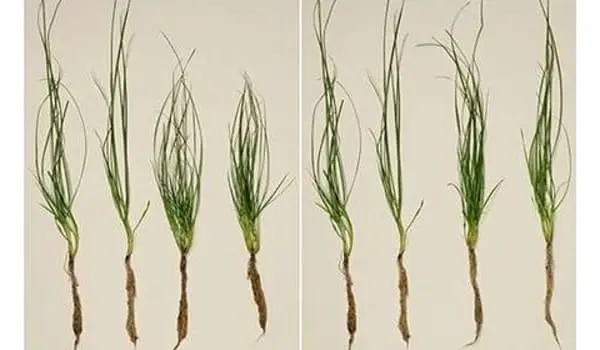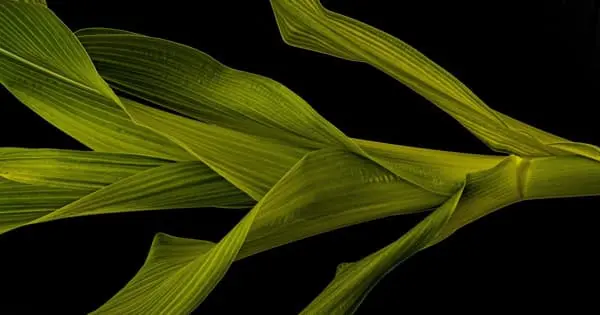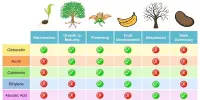Using cutting-edge computational modeling and developmental genetic techniques, the mystery of grass leaf formation has been solved. Our mowers cut the grass on a regular basis, and cows and sheep graze on it, but it grows back. The shape of its leaves is part of the secret to its remarkable regenerative powers, but how that shape emerges has long been a source of debate.
Because wheat, rice, and maize are members of the grass family and have the same type of leaf, the debate is relevant to our staple crops. A John Innes Centre team, in collaboration with Cornell University, the University of California, Berkley, and the University of Edinburgh, has now solved the mystery of grass leaf formation using cutting-edge computational modeling and developmental genetic techniques.
Professor Enrico Coen, one of the corresponding authors, said of the findings published in Science: “The grass leaf has been a source of consternation. By developing and testing various models for its evolution and development, we’ve demonstrated that current theories are likely incorrect and that a discarded idea proposed in the nineteenth century is much closer to the mark.”
The grass leaf has been a source of consternation. By developing and testing various models for its evolution and development, we’ve demonstrated that current theories are likely incorrect and that a discarded idea proposed in the nineteenth century is much closer to the mark.
Professor Enrico Coen
Flowering plants are classified as monocots or eudicots. Monocots, which include the grass family, have leaves that encircle the stem at the base and have parallel veins all the way around. Eudicots, which include brassicas, legumes, and the majority of garden shrubs and trees, have leaves that are held away from the stem by stalks known as petioles and have broad laminas with net-like veins.
In grasses, the base of the leaf forms a tube-like structure known as the sheath. The sheath allows the plant to grow taller while keeping its growing tip close to the ground, protecting it from lawnmower blades and herbivore incisors.
Botanists proposed in the nineteenth century that the grass sheath was analogous to the petiole of eudicot leaves. However, in the twentieth century, plant anatomists noticed that petioles have parallel veins, similar to grass leaves, and concluded that the entire grass leaf (except for a tiny region at the tip) was derived from petiole.

One advantage of late-fall cleanup is that you’ll save a lot of time in the spring when there’s always so much else to do. You’ll also reduce the number of places where insect and animal pests and disease-causing organisms can survive the winter, potentially reducing problems when spring returns. If you have a lot of seedlings from certain perennials in your garden, getting rid of their seedheads can save you a lot of weeding next year. By removing debris as soon as possible, you avoid the risk of leaves matting down and suffocating perennial crowns or emerging bulbs in early spring. If you believe that dead stems and seedheads simply look messy, a late-fall cleanup will provide you with a tidy “blank slate” to look at throughout the winter.
The team revisited the problem of grass development using recent advances in computational modeling and developmental genetics. They tested the predictions of each model against experimental results by modeling different hypotheses for how grass leaves grow. Surprisingly, they discovered that the model based on the 19th-century idea of sheath-petiole equivalence received far more support than the current view.
This is similar to findings in animal development, where a previously dismissed theory – that the ‘underbelly’ side of insects corresponds to the back of vertebrates like us – was vindicated by new developmental genetic research.
The grass study demonstrates how simple changes in growth rules, based on a common pattern of gene activity, can result in a remarkable diversity of different leaf shapes, without which our gardens and dining tables would be significantly poorer.
Most gardeners fall somewhere in the middle of the all-fall and all-spring cleanup strategies, so they benefit from both. Instead of tackling a large cleanup session, spread your pruning chores throughout the fall and winter, beginning with perennials that have lost their luster after the first few touches of frost. If you’ve had fungal disease problems with your peonies, summer-blooming phlox, or other perennials, include them on your early-cleanup list as well. By spring, the only plants left to cut down will be those with exceptionally long-lasting structures, such as warm-season ornamental grasses and fall-flowering asters.
















